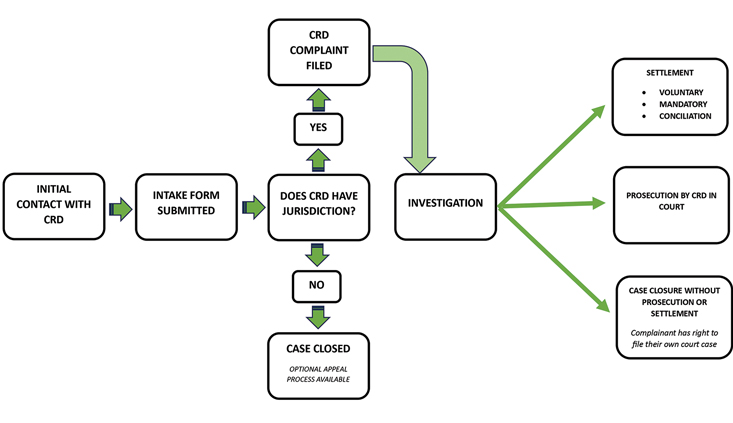Peacemaker playbook
The best path towards resolution is the least adversarial one; a look at your pre-litigation options
As I celebrate my 25th year as an attorney, I can’t help but ponder on what an incredible journey my career has taken me. From my first year of law school up until the beginning of last year, I had only worked at one firm – Toni Jaramilla, A Professional Law Corp., where I remain Of Counsel. In that capacity as worker’s rights advocates, Toni and I represented hundreds of clients in various stages of a case – from prelitigation all the way up through trial (and appeals). Each case and each client had their own unique stories, happy and not-so-happy endings, and many lessons learned along the way. As time went on, and having experienced the full stages of many a case, I find the most gratifying role I can play is that of peacemaker. Having my own firm these past two years has given me the freedom to choose my role in my clients’ stories and in turn, they choose me.
The strategies
According to the definition from Oxford Languages, a peacemaker is: “a person who brings about peace, especially by reconciling adversaries.”
When presented with a client’s case and claims, and particularly in employment matters, there are various strategies and approaches that you can take as the employee’s advocate. You can attempt to resolve your client’s claims “pre-litigation.” You can participate in some form of alternate dispute resolution (e.g., mediation). You can pursue your client’s claims through an administrative process (such as the “CRD,” the CA Civil Rights Department, formerly DFEH), or you can file a lawsuit (or in some situations, arbitration). These options and strategies can be done in combination or sequentially.
I’ve personally found that, in employment cases, where high emotions are involved and things can quickly “get dirty,” the best path towards resolution is the least adversarial one. Resolving cases pre-litigation is often the best option for both parties. Reaching an early resolution of claims benefits both sides by saving everyone costs and time, allows both parties to “buy their peace” with each other and move on, and takes away the risk factor and “rolling of the dice,” which is an inherent part of litigation.
The plays
Case selection
The first step begins with case selection – before the client has even retained you. With few exceptions, even if a client retains me on a “pre-litigation” basis, it will usually be a case that I am willing to file if the matter does not resolve. In other words, I intake potential clients as if I were going to file the case in court or arbitration.
I will always have an “in-person” initial consultation with the client, whether meeting physically in my office or on Zoom. Speaking to a client face-to-face allows me to evaluate their credibility, provides me a better sense of their demeanor and personality, and also allows me to see how well they are able to articulate their claims and express their emotions, which is harder to assess when you are just communicating in writing or having them complete an intake questionnaire online.
Second, I will always conduct my own independent investigation before deciding whether to accept a case. I will ask the potential client to send me a chronology/timeline of their facts. I will also ask for all documents in their possession relating to their case in addition to the names and phone numbers of potential witnesses. I will invest the time in reviewing the documents and interviewing witnesses in order to get a good understanding of the facts and evidence.
Lastly, I will ask the potential client what their main goal/objective is in proceeding with their legal claims. Typically, the response I get gives me a good indication of whether the potential client is being reasonable and realistic in their expectations. If the potential client has unrealistic expectations, it does not mean that I will automatically reject the case. However, I will have further discussions to determine whether the potential client is open to listening to my opinions and willing to defer to me when it comes to settlement discussions and recommendations.
Once I have conducted an initial “in-person” consultation with the potential client and reviewed their chronology/timeline and documents, and interviewed witnesses (if provided) and determined that there is sufficient evidence to support the claims, then I will proceed with a retainer agreement with the client.
The demand letter
Preparing a thoughtful and detailed letter with supporting facts and law is an effective way to resolve cases pre-litigation. There is a significant amount of work and front-loading that is necessary in writing strong and effective demand letters.
I draft the demand letter based on the information received from my client in addition to evidence that I obtained based on my own independent investigation. I do not have a “cookie cutter” approach to demand letters and draft each one on a case-by-case basis. While I do not use a template, my demand letters will always include certain information.
Typically, I prefer to include a detailed version of the facts and summary of legal claims. If there are key documents (e.g., employment agreement in a breach of contract claim, or complaint(s) in a retaliation claim), I will include those as well. The demand letter will also include a “preservation of evidence” request, in addition to a request for my client’s payroll and personnel files pursuant to Labor Code sections 226, 432 and 1198.5. I usually do not include a specific monetary demand in the demand letter, unless the claims include wage-and-hour violations that are subject to specific calculations.
I extend an invitation to contact me to discuss my client’s claims in addition to an offer to participate in a mediation. I request a response date between 10 and 14 days from when the demand letter is sent. Most times, I receive a response within the requested timeframe. If I do not receive a response, I will follow up with the person to whom the letter is addressed (i.e., usually the head of HR or the company, such as the president or CEO) by email and/or phone.
Pre-litigation mediation
In many cases, the other side will agree to participate in private mediation in an attempt to resolve my client’s claims before proceeding with litigation. I know that there is a belief that mediating a case pre-litigation in not worthwhile, especially when the parties have not exchanged discovery nor taken any depositions. However, I believe that pre-litigation mediations can be successful for certain types of cases and with parameters that are agreed upon in advance with the opposing side.
For pre-litigation mediations, I will always propose an informal exchange of discovery – similar to the initial disclosures that parties will exchange in federal cases or in arbitration. As counsel for employees, we are necessarily at a disadvantage with respect to obtaining and having evidence that is typically in the possession of the employer/company.
Exchanging documents before a pre-litigation mediation allows the parties to engage in candid and meaningful discussions regarding evidence that would be used in litigation. Exchanging this information also allows the parties to make informed decisions as to their settlement position before a significant investment in time and costs have been made.
You may also want to consider exchanging mediation briefs with the other side. Although in a pre-litigation mediation, much of the information in the mediation brief would be the same as in the demand letter, for purposes of facilitating settlement discussions, I like to include a summary and calculation of damages, information and medical records supporting emotional distress damages, in addition to an opening settlement demand.
CRD investigations
A Civil Rights Department (CRD) investigation is another option to consider in a pre-litigation case. FEHA (California Fair Employment and Housing Act) requires employees to exhaust their administrative remedies before filing suit (Gov. Code, § 12960.) AB 9 extended the statute of limitations to exhaust administrative remedies from one year to three years. Employees can comply with this exhaustion requirement in two ways: 1) filing a complaint with the CRD and requesting an immediate right-to-sue notice; or 2) filing a complaint with the CRD and requesting an investigation. Most plaintiff’s attorneys seem to prefer complying with their exhaustion requirement by filing a complaint with the CRD and immediately requesting their right-to-sue notice.
The intake form
However, for most of my clients/cases, I prefer to file a complaint with the CRD and request an investigation. The first step in filing a CRD complaint and requesting an investigation is to file an intake form. While members of the general public have three options to file an intake form: online, by mail or phone, I will begin the CRD investigation process for my clients by filing a complaint online through the CRD’s online portal: Cal Civil Rights System (CCRS) at ccrs.calcivilrights.ca.gov.
The CRD intake form asks for basic information pertaining to your case including: contact information for your client, you (as the representative) and respondent(s). The intake form will also ask for the “first date of harm” as well as the “most recent date of harm.” On the intake form there will also be boxes to check off where you are choosing the basis of the harassment/discrimination (e.g., race, age, gender, religion, disability, etc.) or retaliation (e.g., witness in an investigation, complained of unlawful conduct, etc.), in addition to boxes to select to describe the type of harm that occurred (e.g., failed to accommodate, suspended, demoted, reprimanded, terminated, etc.).
You also have the option of uploading relevant documents. Although I usually do not upload any documents, I was recently advised by a CRD investigator that if the complainant is represented by counsel, that they find it helpful to upload a timeline/chronology. Once the intake form is completed, you will select an appointment time for your client’s intake interview. In my experience, it typically takes approximately 90 days from when you complete the intake form to when your client’s intake interview is scheduled.
The intake interview
The CRD provides up to one hour to complete the intake interview. I will prepare my clients for their intake interview prior to their scheduled appointment by reviewing their intake form in addition to explaining what to expect. The intake interviews are conducted by phone and I am also on the phone for the entirety of my client’s intake interviews. Although I am on the call during my client’s intake interviews, the CRD will direct the factual questions to the client/complainant.
The complaint process
After submission of the intake form and after the intake interview is conducted, the CRD describes its complaint process as follows (calcivilrights.ca.gov):
“CRD will evaluate the allegations in the intake form and decide whether the laws that CRD enforces cover these allegations. Understand that CRD can only investigate violations of certain civil rights laws. While many people believe they were treated unfairly, CRD can only accept cases if one of the laws it enforces may have been violated. If your complaint is not accepted for investigation, it is not because CRD does not believe you were treated unfairly. Rather it is because your complaint, if proven, would not violate the civil rights laws that CRD enforces.
If these laws cover your allegations, CRD will prepare a complaint form for your signature. When you return the signed complaint, it will be delivered to the person or entity that you believe discriminated against you (called the respondent).
In most cases, the filing of a complaint does not mean that CRD has already determined whether there is reasonable cause to believe any laws have been violated. Instead, it means that CRD has preliminarily determined that the laws that the department enforces cover the complaint’s parties and allegations.”
The investigation
The CRD further describes its investigation process as follows: “Although CRD may provide legal services and advice for complainants who are seeking relief for alleged civil rights violations, the department independently investigates and assesses the facts and legal issues in each case. These investigations and assessments include, among other things, reviewing information and evidence from complainants, respondents, or other sources. When a respondent answers a complaint, CRD reviews it with the complainant.”
During the rebuttal meeting, the CRD will go over respondent’s answers to the complaint as set forth in their position statement. This meeting is also held by phone. Although the CRD is not able to provide respondent’s position statement to the complainant, once the matter is closed, your client (the complainant) is able to obtain a copy of the entire investigation files from the CRD by making a Public Records Act request (which you are also able to do online through the CCRS website).
ADR with the CRD
“As appropriate or required by law, CRD attempts to resolve complaints through the free dispute resolution services that that CRD offers to parties.” The CRD will ask during the intake interview whether you are amenable to participating in a mediation. Once the complaint is served on respondent(s), if they also agree to mediation, then the file is transferred from the investigation department to the ADR department.
Shortly after the case is transferred to the ADR department, you will get notice of the assigned mediator. The CRD offers a full-day mediation at no charge with one of the CRD mediators. Prior to the mediation, the parties are provided a sample settlement agreement that is required to be used by the parties if a settlement is reached. This settlement agreement contains language and injunctive relief, which the parties are required to adopt if a resolution is reached. The parties are also free to execute a long-form settlement agreement.
Findings by the CRD
“Unless a complaint has already been resolved, CRD uses the facts obtained through its investigation to determine if there is reasonable cause to believe that a law the department enforces has been violated. If not, the case is closed. If there is reasonable cause, CRD notifies the parties of this determination and may notify them that the department intends to file a lawsuit in court. But before CRD files a lawsuit, it typically requires the parties to go to mediation. This mediation provides another opportunity to reach an agreement to resolve the dispute. If the case is not settled during this mediation, CRD may proceed with filing its lawsuit in a court.”
I have had the experience of cases in which the CRD found reasonable cause to believe a violation(s) of FEHA had occurred. In one of those cases, the parties were ordered to mandatory mediation and the case resolved. In the other cases, we litigated the client’s case alongside the CRD, representing our client(s) as the real party in interest.
The victories
Playing the role of peacemaker has allowed me to achieve early resolution of my clients’ claims and an outcome that would not otherwise have been achieved had we proceeded through the litigation process.
A case which illustrates this point is one where I represented a personal friend of mine. She had worked in the corporate world in the finance sector for the past 23 years. Her claims involved CFRA violations in that she had been retaliated against after invoking CFRA leave to care for her father, who was suffering from a serious medical condition.
After resolving her claims pre-litigation, my friend ended up leaving the corporate world altogether. In fact, she did not return to working full time and instead, worked part-time in jobs that, in Marie Kondo’s famous words, “sparked joy.” When I saw my friend a couple of years later at her father’s funeral, she thanked me for resolving her case, which allowed her the freedom (from both a financial as well as time perspective) to be able to spend time with her father. She no longer felt the pressures of the corporate world and truly seemed at peace.
The end
Playing the role of peacemaker is my preferred role as counsel and being able to achieve peace for my clients (and opposing side) through early resolution will always be in my playbook.
May Mallari

May Mallari is founder and principal of Mallari Law Group, A Professional Law Corp. A graduate of Loyola Law School, for the past 25 years Ms. Mallari has focused on representing and advocating for workers’ rights. Ms. Mallari is also an advocate for her son (who has Down syndrome) in the areas of special education and disability laws, and inclusion. She is certified as an Independent Facilitator to work with families as part of CA’s Self-Determination Program (SDP). She can be reached at may@mallarilawgroup.com.
Copyright ©
2025
by the author.
For reprint permission, contact the publisher: Advocate Magazine


